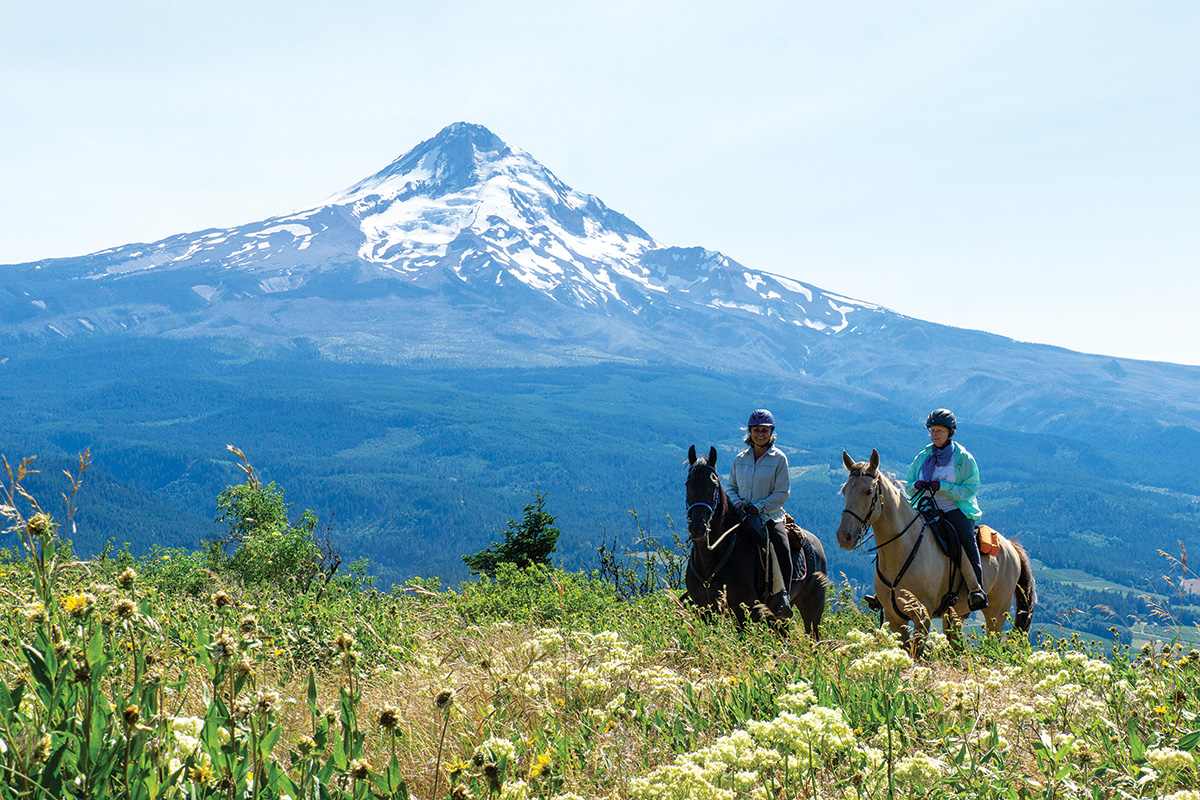
I grew up camping, and I grew up with horses, but I never put the two together until I was in high school. Camping at a nearby state park, I noticed some horse corrals and water troughs and went to investigate. I could bring my horses camping with me? Sign me up!
Why Horse Camp?
“It’s a nice feeling to wake up next to your horse with the pines all around you,” says Craig Ferdig of Prescott, Ariz. Ferdig is a national director for Back Country Horsemen of America, a nationwide organization committed to protecting equestrian access to public lands.
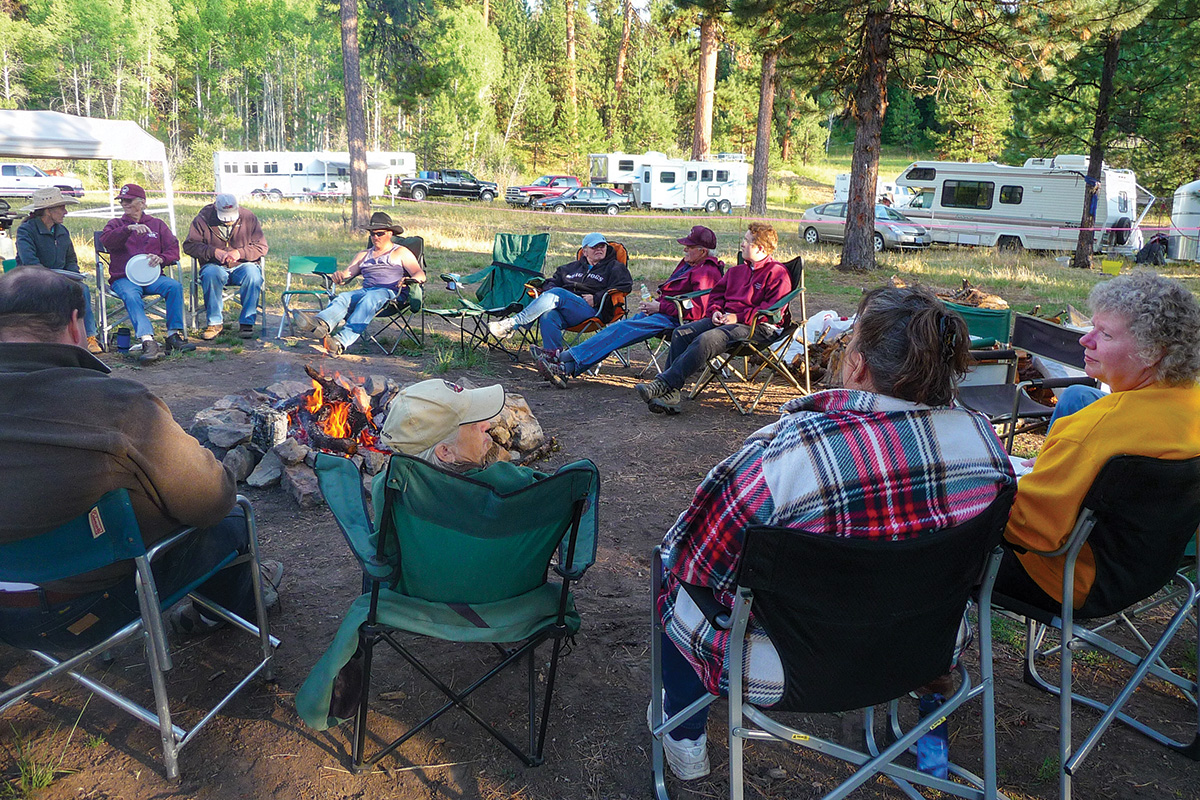
Local chapters assist with trail maintenance and improvement projects, as well as offering education and hosting events. Ferdig and his wife have camped in numerous states in many ways, from camping in locations with corrals and water provided to dry camping in more remote areas.
“There’s something wonderful about going into the woods and spending several days with your horse just 10 feet away,” says Kim McCarrel, vice president for public lands at Oregon Equestrian Trails and the author of five trail guides for the region. “You can go riding every day and come back to camp and enjoy hanging out with your friends and horses. It’s a fabulous experience.” McCarrel camps eight to 10 times each year, and there are 14 horse camps within an hour and a half drive of her home in Bend, Ore.
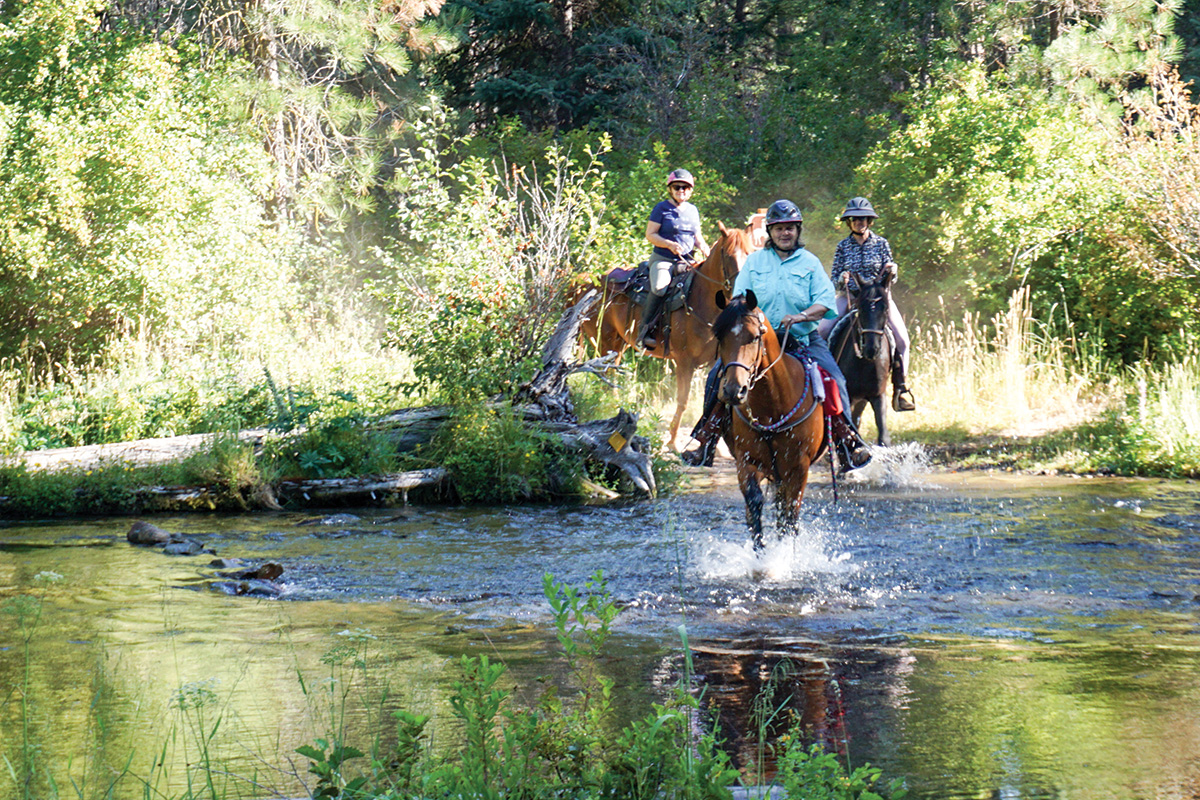
Fellow Oregon Equestrian Trails and Back Country Horsemen of America member Marty DeVall of Oregon City, Ore., says there are around 70 horse camps in the state, most with corrals built by volunteers. DeVall is a devoted trail maintenance and website volunteer. He horse camped for many years and has enjoyed experiencing the different scenery and improving trails along the way.
Where to Find Horse Camps
There are many ways to find regional horse camping locations. All our experts recommend joining local trail riding groups. Not only can you learn from veteran members, but they can give you the scoop on local campsites. These groups may even have directories available to members.
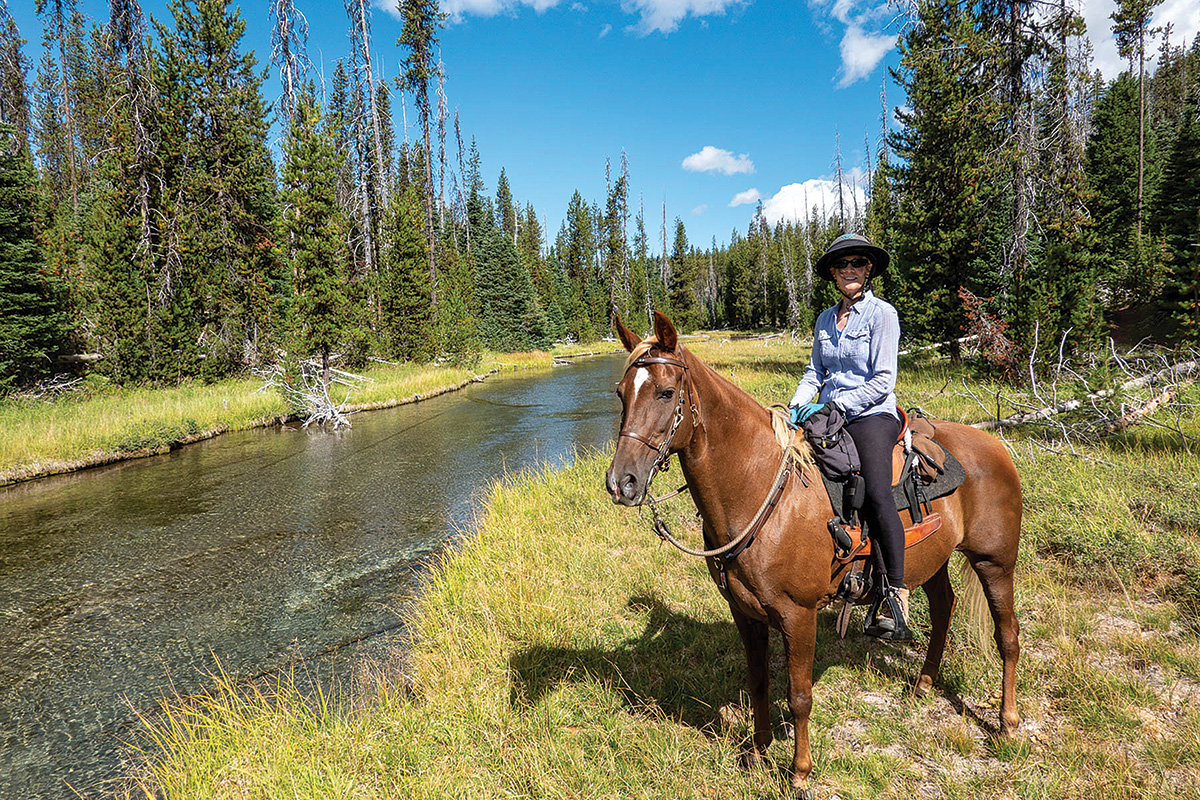
You can also find horse camping by searching online. You can look at state park, national forest and national park websites. There are also national camping websites that allow you to search for horse camping.
Keep in mind that amenities will vary. As a newbie, start with locations that provide corrals and running water. Sites can fill up fast, so make your reservations well in advance. As you get more experienced, you can consider camping at more remote locations, which require additional gear and preparation.
How to Prepare
In order to enjoy yourself, it’s important to properly prepare. Your horse should be used to the sights and sounds of trail riding, but also things like tents and unusual encounters you may have along the way, from wildlife to fellow trail users.
“For example, people hike with goats and llamas,” says DeVall. “I’ve experienced that firsthand. If you’re out on trail and your horse hasn’t seen a llama before, he may get very spooked. Try to take your horse through as many things as he might see in the wilderness where you are going. Riding with a more experienced horse generally helps a young horse.”
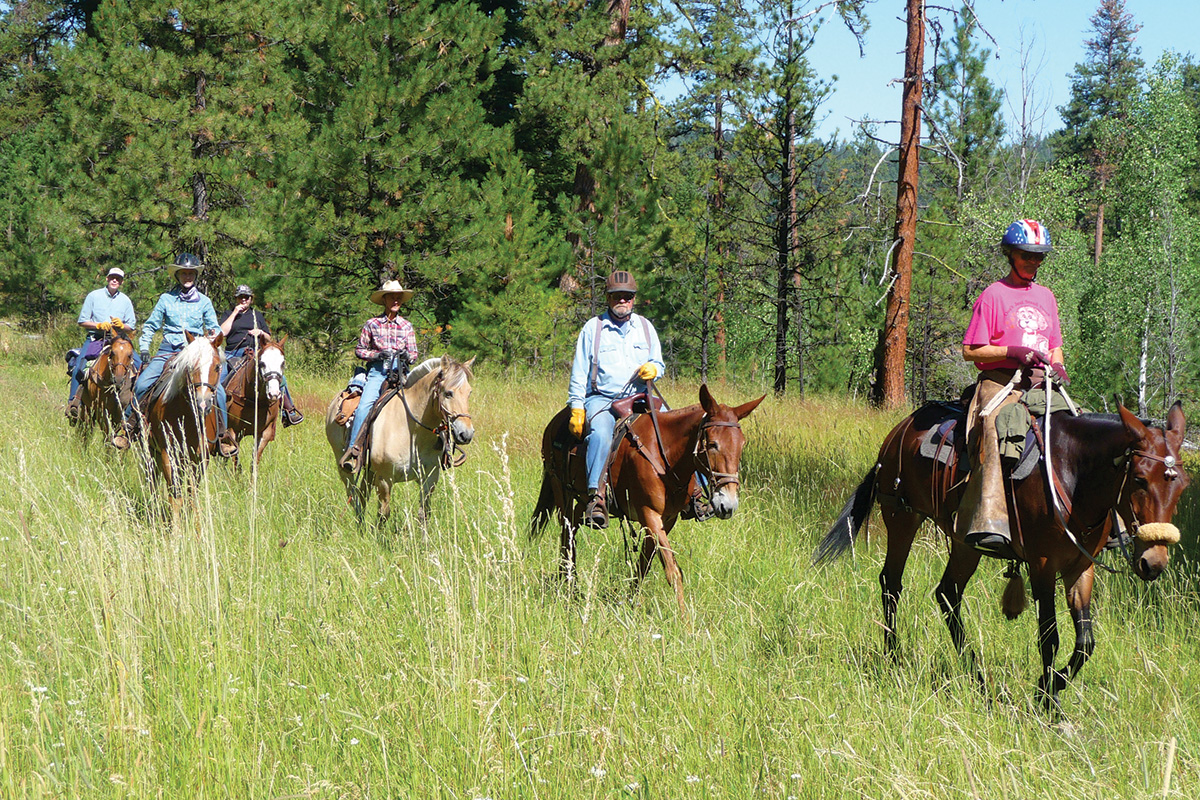
At their local state park, DeVall and other equestrians helped create training stations where trail riders can go to practice obstacles that they may encounter on the trail, such as suspension bridges. There, they built a low bridge that’s safe to practice on, as well as many other stations.
“Look for places locally that you can take your horse and work on training,” he advises. “You don’t want to be thrown off out in the wilderness.”
Ferdig suggests setting up a tent at home.
“Setting up a tent can scare horses if they aren’t trained around them,” he notes. “Make sure the horse has confidence and doesn’t spook at every sound.”
At home, you can work on desensitization exercises and building your horse’s confidence. For example, you can invite some children you know over to play outdoor games nearby.
You can also practice walking through puddles, opening umbrellas, and letting flags and tarps blow in the wind. Just take things slow, always keeping safety in mind.
If you join a trail riding or camping group, make sure your horse is comfortable riding with multiple other horses.
“If you’re used to riding with one or two people, try to expand the number you’re riding with to prepare for a group outing,” says McCarrel. “Also, make sure your horse gets a chance to experience being in the lead, the middle and the back. Make sure the people you’re riding with have good trail manners and don’t do things that can upset your horse, like running off without warning.”
If and when you transition to more primitive camping, you will need to train your horse to accept being tied to a highline.
“If you’re going somewhere you’ll need to highline, I recommend you set up a highline in your barnyard and get your horse used to it,” says McCarrel. “Feed your horse dinner on the highline a couple of nights and let him get used to hanging out there. Also, it gives you practice setting up a highline. For a lot of people, setting up a highline is kind of mysterious, as it can sag.”
She recommends the website trailmeister.com, which not only helps you find horse camping, but also has resources such as step-by-step highline instructions.
What to Pack
If you’ve ever been camping before, you know the list of what to bring is quite extensive. Add horses to the mix, and your list doubles. McCarrel suggests creating a master checklist that you can add to and subtract from for each trip.
DeVall notes that many camping locations require weed-free hay. This is to stop the spread of invasive species of plants. Check in advance if the location you’re staying requires certified weed-free hay, which you can purchase from many feed stores.
If you’ll be crossing state lines, make sure you know what paperwork (such as current health certificate and proof of a negative Coggins test) is required, and have it on hand.
Also ensure there’s a reliable water source for your horse or that you’re bringing plenty of your own.
“We have a 75-gallon water tank that we take in the back of our truck as a backup, even if we know there’s a water supply,” says Ferdig.
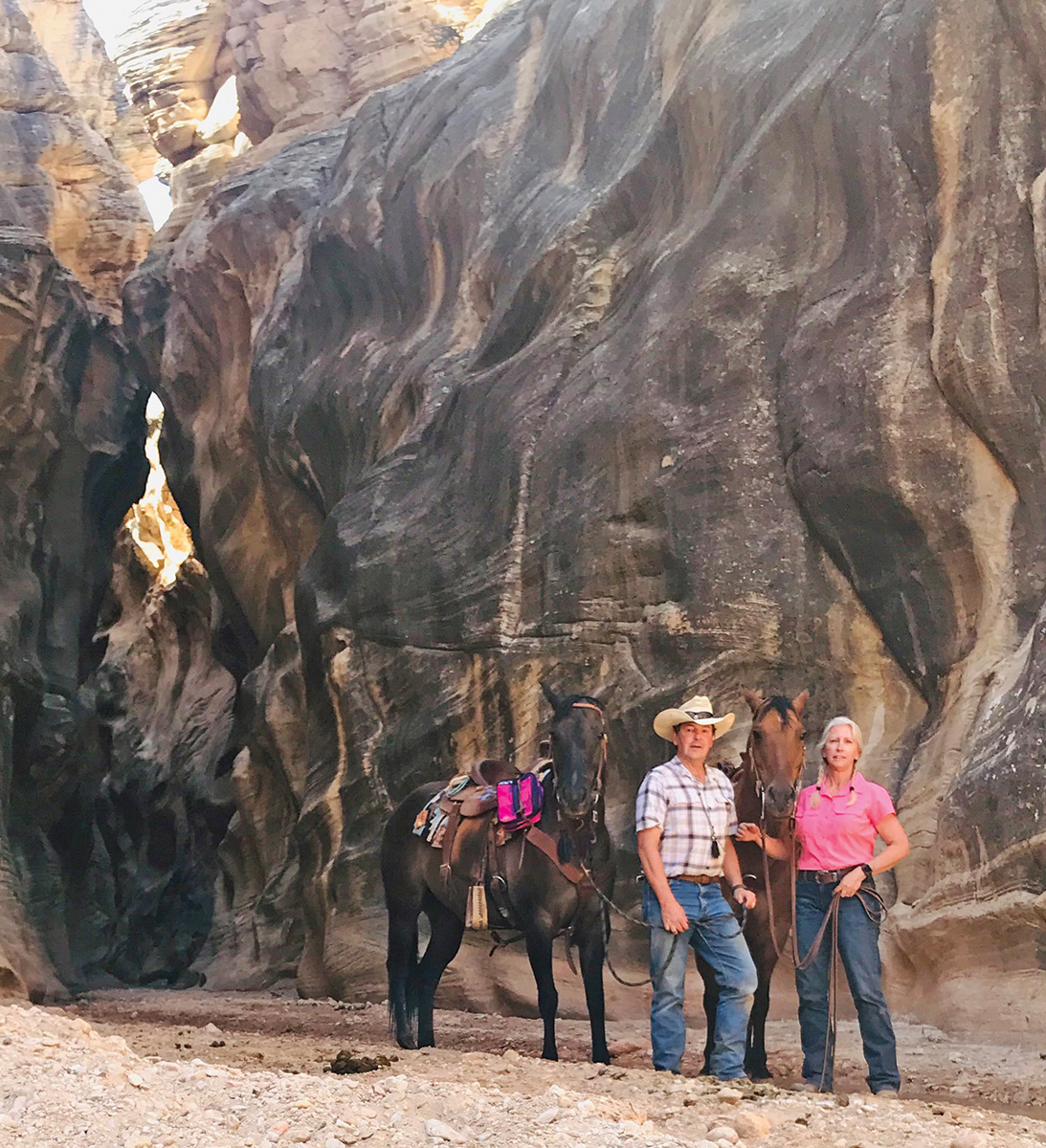
Plenty of food and water is important for you and your horse. Hay can help horses stay calm and warm, so bring extra.
Also pack your usual tack, buckets, lead ropes, fly spray, bug spray, sunscreen, warm clothes and bedding for you, all-weather gear, a manure fork and muck bucket, any medications, a horse first-aid kit and a human first-aid kit.
You can also locate area veterinarians in advance, in case of an emergency. If your horse tends to colic or has other health issues, check with your vet about what to bring and how to handle any issues that arise.
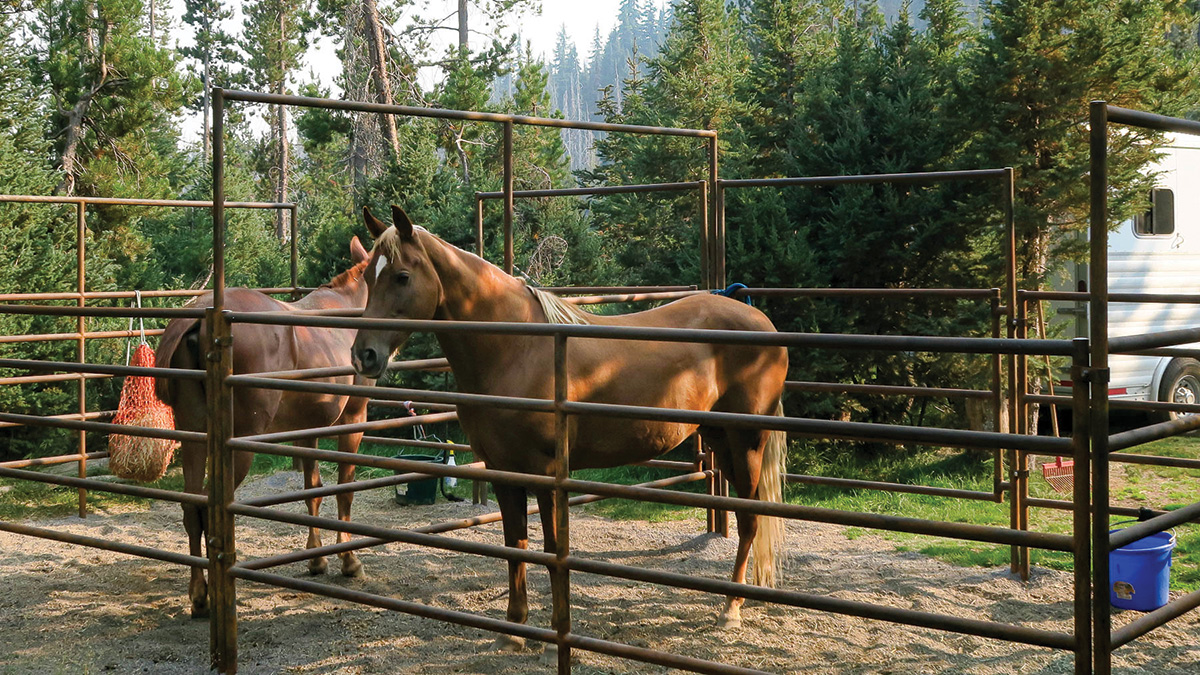
For your rides, assemble a trail kit for your saddle bag with things like first-aid supplies, a map/compass/GPS, a rain poncho, water and a snack, a hoof pick, insect repellent, and other handy items like duct tape, a whistle, a small flashlight, matches, a pocketknife or multipurpose tool, and twine.
Bring your phone (but keep it on your person in case you fall off), and ride with a buddy. If you’ll be outside of cell service range, it’s a good idea to have a satellite GPS emergency alert device.
To help keep lands accessible to equestrians, it’s important to be a good steward of the natural areas you visit.
“Make sure you dispose of manure properly,” says Ferdig. “Leave no trace. In your campground, leave it as you found it. Clean up everything.”
If you find you love horse camping, consider volunteering to help maintain trails and add infrastructure, ensuring generations of equestrians can continue to enjoy this amazing pastime.
This article about camping with horses appeared in the August 2023 issue of Horse Illustrated magazine. Click here to subscribe!





